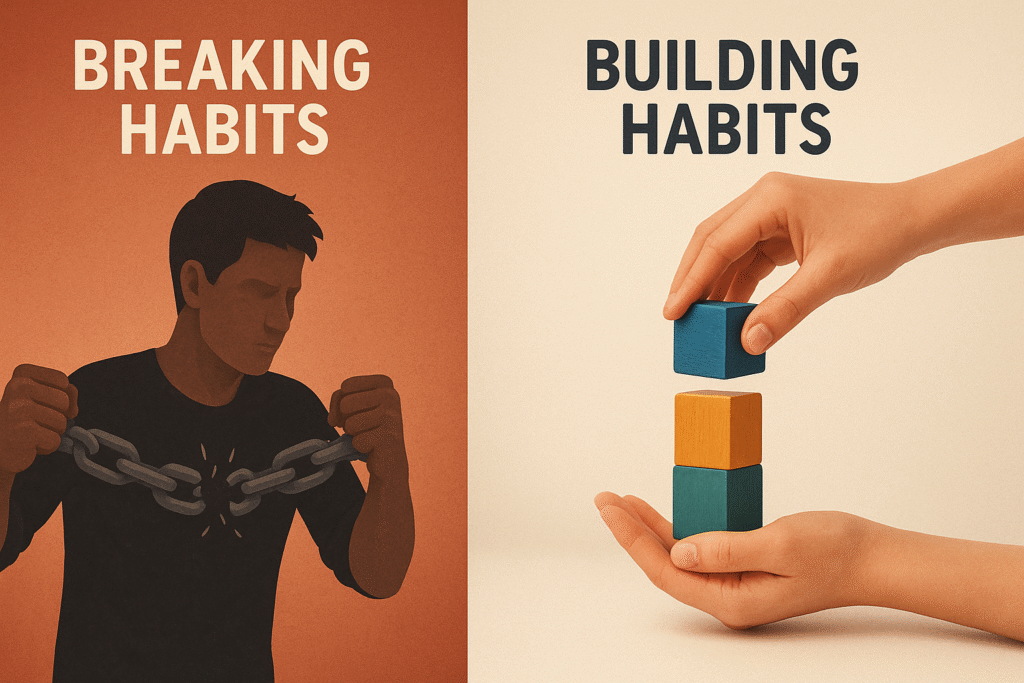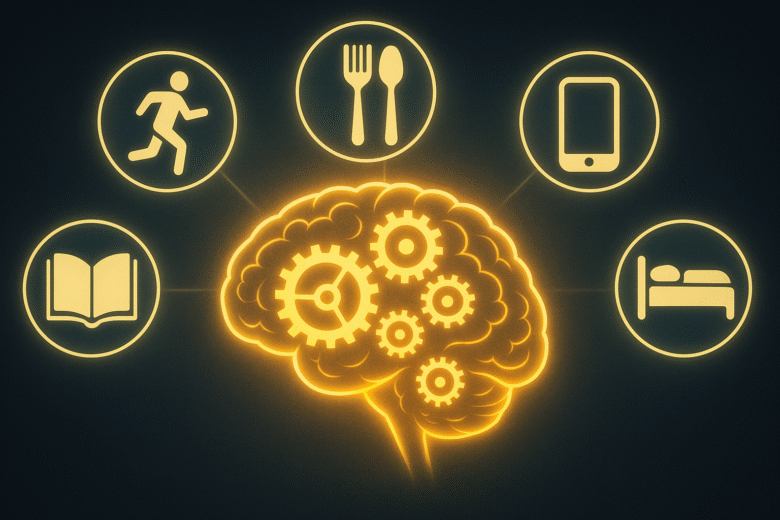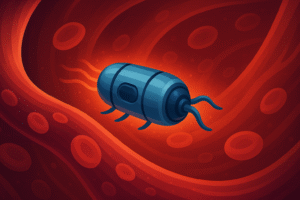Fun Fact: Nearly 40% of your daily actions aren’t conscious decisions—they’re habits playing on autopilot.
Ever opened your phone without meaning to? Or found yourself halfway through a bag of chips before realizing you weren’t even hungry? That’s not laziness or lack of willpower—it’s your brain being efficient. For better or worse, your brain loves habits.
From brushing your teeth to doomscrolling on Instagram, habits form the invisible architecture of our lives. But how does the brain decide what sticks? Why are bad habits so hard to quit and good ones so tough to keep?
Let’s dive into the neuroscience of habit-building—and how to hijack your brain to make it work for you instead of against you.
What Is a Habit?
A habit is a behaviour that becomes automatic through repetition. Unlike conscious decisions, habits require little thought once established—they’re triggered by cues and executed without effort.
According to psychologist Dr. Wendy Wood, habits are formed when actions are repeated in consistent contexts—until they become mental shortcuts. The brain loves shortcuts. They save energy, time, and decision-making effort.
In essence, habits are your brain’s way of saying: “Don’t think. Just do.”
The Habit Loop: Cue, Routine, Reward
Habits live in a three-part neurological loop first described by journalist Charles Duhigg in his book The Power of Habit:
Cue – A trigger that starts the habit (e.g., boredom, time of day, location)
Routine – The behaviour you perform (e.g., smoking, checking your phone, snacking)
Reward – The benefit your brain receives (e.g., pleasure, stress relief, dopamine)
This loop is embedded in your basal ganglia—a deep brain structure responsible for motor control and habit memory.
Over time, this loop becomes so ingrained that the cue alone can set off the entire chain reaction—without any conscious thought.
Case Study: The Smoking Habit
Imagine Rahul. Every time he finishes lunch, he lights a cigarette. He doesn’t think much about it—it’s just part of his day.
Cue: End of a meal
Routine: Smoking
Reward: Moment of relaxation, a burst of dopamine
Even if Rahul wants to quit, the neural pathway is well-established. The cue is still there. The brain still craves the reward. Without intervention, the habit wins.

The Brain Chemicals Behind Habits
Habits are powered by dopamine, a neurotransmitter involved in pleasure, learning, and motivation.
But here’s the twist: dopamine is not just released when you get the reward—it spikes in anticipation of it. That’s why the mere cue (like hearing a notification sound) can make your brain crave the behaviour (checking the message), even before you act.
Over time, the brain rewires to expect this feedback loop. It starts treating the habit as essential—even if it’s harmful.
This is how addiction forms. And why breaking bad habits feels like breaking yourself.
How Long Does It Take to Build a Habit?
You’ve probably heard “21 days to form a habit.” It’s a myth.
Research from University College London shows that, on average, it takes 66 days to form a habit—but this can vary from 18 to 254 days depending on complexity, personality, and consistency.
So yes, persistence matters. But so does patience.
Why Bad Habits Stick So Easily
Here’s a depressing truth: bad habits often form faster than good ones. Why?
Immediate rewards (junk food, scrolling) are more powerful than delayed ones (fitness, learning).
Stress and fatigue push us toward automatic, low-effort behaviours.
Environments are designed to cue bad habits constantly—ads, notifications, food packaging.
Your brain isn’t broken. It’s just responding to its surroundings.
Neuroplasticity: The Brain Can Change
The good news? Your brain is malleable.
Thanks to neuroplasticity—your brain’s ability to rewire itself—you can unlearn harmful patterns and build healthier ones. But it takes conscious effort, repeated action, and time.
Like carving a new path through a forest, it starts hard. But the more you walk it, the easier it becomes.
How to Build Better Habits: Brain-Based Strategies
Want to change your habits? Use these neuroscience-backed tactics:
- Start Small
Instead of vowing to read a book a week, start with one page a day. The brain resists massive shifts but embraces tiny wins.
- Attach to an Existing Habit (Habit Stacking)
Tie your new habit to an old one: “After I brush my teeth, I’ll meditate for 2 minutes.”
- Make the Cue Obvious
If you want to drink more water, put the bottle where you can see it.
- Make the Reward Immediate
Use music, praise, or tracking apps to trigger dopamine after good behaviour.
- Create Friction for Bad Habits
Make the unhealthy behaviour harder to access—delete the app, lock the snacks, turn off notifications.

Breaking Bad Habits: What the Brain Needs
Breaking a habit is not just about stopping the behaviour—it’s about replacing it.
The cue will still exist. The brain still wants the reward. If you don’t give it a new routine, the old one will return.
Example:
Old habit: Scrolling social media after dinner
New habit: Taking a walk or reading for 10 minutes instead
You can’t erase a habit loop—but you can overwrite it.
The Power of Environment
You shape your habits—but your environment shapes you.
Want to eat healthier? Stock your kitchen accordingly.
Want to sleep better? Keep screens out of your bedroom.
Want to focus? Make your phone less interesting.
Design spaces that reinforce the person you want to become. Don’t rely on willpower—rely on architecture.
Case Study: Habit Change in the Military
The U.S. military trains recruits by designing environments where good habits are easy and bad ones are impossible.
- Clear routines
- Repetition
- Social reinforcement
- Consequences for deviation
Over time, behaviours become second nature—not because of internal motivation, but because of external structure.
You can do this too.
Conclusion: Your Brain Is a Habit Machine—Use It Wisely
Your brain doesn’t care if a habit is good or bad. It just runs the program.
But once you understand how the machine works—the cues, the loops, the dopamine spikes—you can start to rewrite the code.
So, the question isn’t “Can I change?” It’s “Will I work with my brain—or against it?”
Because change doesn’t happen in a moment. It happens in the tiny, invisible, repeated actions that become who you are.
Author’s Note
This blog is a guide to becoming your own brain mechanic. Habits aren’t destiny—they’re design. And when you understand the blueprint, you can rebuild yourself one small behaviour at a time.
G.C., Ecosociosphere contributor.
References and Further Reading
- https://www.ncbi.nlm.nih.gov/pmc/articles/PMC7280831/
- https://www.psychologytoday.com/us/basics/habit-formation
- neuroscience Archives – Unfiltered. https://unfilteredonline.com/tag/neuroscience/
- Getting into the habit – of better cyber security. https://psybersafe.com/blog/getting-into-the-habit-of-better-cyber-security
- Lieber, M. (2016). Implementing tiny goals after current habits to create consistent healthy lifestyle routine. https://core.ac.uk/download/232678957.pdf
- Overcoming Vices. https://itsdrills.com/2023/03/19/overcoming-vices/




